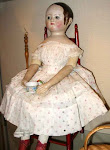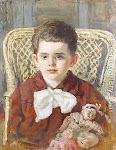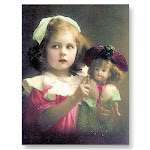

Fanny Elssler
During its heyday from the 1820s well into the 1840s, the Romantic ballet featured some of the most famous ballerinas the dance world has ever produced....
Marie Taglioni, Fanny Cerrito, Carlotta Grisi, and Fanny Elssler were among the first dancers to be renowned internationally, and they remain heralded in the annals of ballet today for their early virtuosity and expressive capacities. However, during much of the nineteenth century, ballerinas in general were subject to derision because of their perceived immorality and indecorousness.
Quite simply, they represented an art form that was designated by denizens of the nineteenth century as immodest female public display catering only to lascivious male admirers. Indeed, even during the pinnacle of Romantic ballet's popularity during the late Regency period and the early Victorian era, professional dancers were considered by most to be little more than courtesans to monied or titled patrons. Such an attitude became the master narrative for these cultural icons as the century matured.
Fanny Elssler was one of the most famous ballerinas of the 19th century. Fanny was trained in ballet from an early age and made her début before the age of seven. She was often performing with her two years older sister Therese (1808-1878). The older sister was to be overshadowed by the success of Fanny, but they continued to perform together – Therese finally leaving the stage when she had gathered quite a fortune and could look forward to a comfortable life. The beginning of the great success for Fanny Elssler came at her performance in Berlin 1830 – with her sister. This was to mark the beginning of international travels and performances in Europe and the US.

Le Délire d'un peintre was produced in London in 1843.
It was a typical piece of Romantic ballet nonsense, about a painter (Jules Perott) who is in love with a dancer (Fanny Elssler), whom he has painted. The dancer pretends to be the painting come to life and haunts him 'mingling the most sparkling playfulness with the most deep-souled passion'. In the end they are married and the ballet ends with the spirited Castilliana Bolero. Perrot's tight breeches and short bolero jacket, with elaborate decorations, and Elssler's bell-shaped skirt trimmed with flounces of lace would identify the dance as Spanish, even if they were not holding the obvious castanets. In 1836, Elssler had a huge success with a solo based on the Spanish dance, the Cachucha, and ever afterwards audiences expected a Spanish-style solo or pas de deux in her ballets, even, as in Le Délire d'un peintre, the story had nothing to do with Spain.


Fanny Elssler's romantic admirers included the pre-March publicist and diplomat Friedrich von Gentz (1764-1832). A man 45 years Elssler's senior, whose admiration and personal devotion she enjoyed from 1829 until his death, he was a friend and admirer of Prince Klemens von Metternich, who warned him against the liaison with the younger woman, but his words were useless against the passion of Gentz's life. Metternich and others believed that Gentz's affair reflected a Romantic aspect never seen before in such a rational man., and it was generally accepted by his friends that the involvement with the dancer hastened the former rationalist's death. But Gentz was one of many for Fanny Elssler, who was idolized by fans at the peak of her career, like the singers Henriette Sontag and Jenny Lind who were similarly admired. This obsessive admiration reflected passion of many contemporaries for the performing arts during the Biedermeier era.

Fanny Elssler epitomized lively theatricality. She was one of the most important ballerinas of the Romantic era; her dancing was sensuous, earthy, and fired by great energy. Along with the Romantic image of women as diaphanous and fragile creatures, there was a surge in nationalism due to the proliferation of wars and revolts during the 19th century. This increase in national pride led many artists to revive the folk traditions of their countries.
Biscuit Porcelain, Chodau manufactory,Bohemia, ca. 1890.
This piece was originally illuminated by a candle, later electrified. A lithophane is a thin piece of porcelain in which a relief image is produced by the sculptor manipulating the thickness of the clay to let certain amounts of light shine through the plate. The thinnest parts of the clay shine the most light, thus the light-struck components of the image are carefully balanced against the more dense “darker” ones.
 "La Cachucha"
"La Cachucha" One of her most famous performances was doing the La Cachucha in the role of Florinda in the ballet Le diable boiteu, written by Jean Coralli and Casimir Gide in 1836. This was even to be captured on prints of the time, and even in porcelain. She was also noted for her performances as the lead in Jules Perrot's La Esmeralda (1844).


ABG "Fanny Elssler" white china shoulder head, with kid body, and painted blue eyes. Original blue silk and lace dress ca. 1850's.



Alt, Beck and Gottschalk "Fanny Elssler" shoulder-head of flesh tinted china. Hair double parted on top forming a "V". on the hairline. Smooth black hair swoops down to cover ears, and is caught up in a coiled, braided bun in back. Brown eyes and closed mouth painted red. Cloth body with china lower legs and arms...ca. 1850.


Elssler became an international star as a result of her extensive tours throughout Europe, the United States, Cuba and Russia. Among her many admirers were the writers Ralph Waldo Emerson and Henry Wadsworth Longfellow. She was to stay on stage and perform until she retired, having earned a fortune which could make it possible for her to have a comfortable life henceforth.


She purchased an elegant villa near Hamburg, where she lived in quiet retirement for many years. Visitors from a distance occasionally dropped in for some years after her retirement, but her fame was as ephemeral as it was glorious, and long before she could be called an old woman the world had almost entirely forgotten her. Although she lived outside of Hamburg, she died in her beloved Vienna and was buried there at the Hietzing cemetery.

For most dancers whose lives were "known" by the ton, there ended aesthetic consideration of them. Fanny was able to escape such pigeonholing, however, because of her impressive virtuosity on stage. Indeed, she was universally recognized in the dance world as the standard bearer for artistry, and it was this bravura that made her reputation_far more than her affairs.













































.jpg)




































































Que historia tan interesante!!!
ReplyDeleteLa segunda muñeca es de las más bonitas que he visto en ese estilo.
Gracias Maria!...I believe from all the Portrait Dolls, the Fanny Elssler model is one that most resembles its namesake. The artist really captured the beauty of the dancer.
ReplyDeleteAlways a pleasure to hear from you.
Bisous
Замечательный рассказ и фотографии собраны очень интересные! Кукла, действительно отражает черты оригинала.
ReplyDeleteУважаемые Tamaravvo
ReplyDeleteБлагодарю вас за ваш комментарий nice. Я считаю, это один из примеров почти идеальный портрет сходство, эти куклы, действительно красиво, и истории, которая сопровождает их добавляет их таинственность.